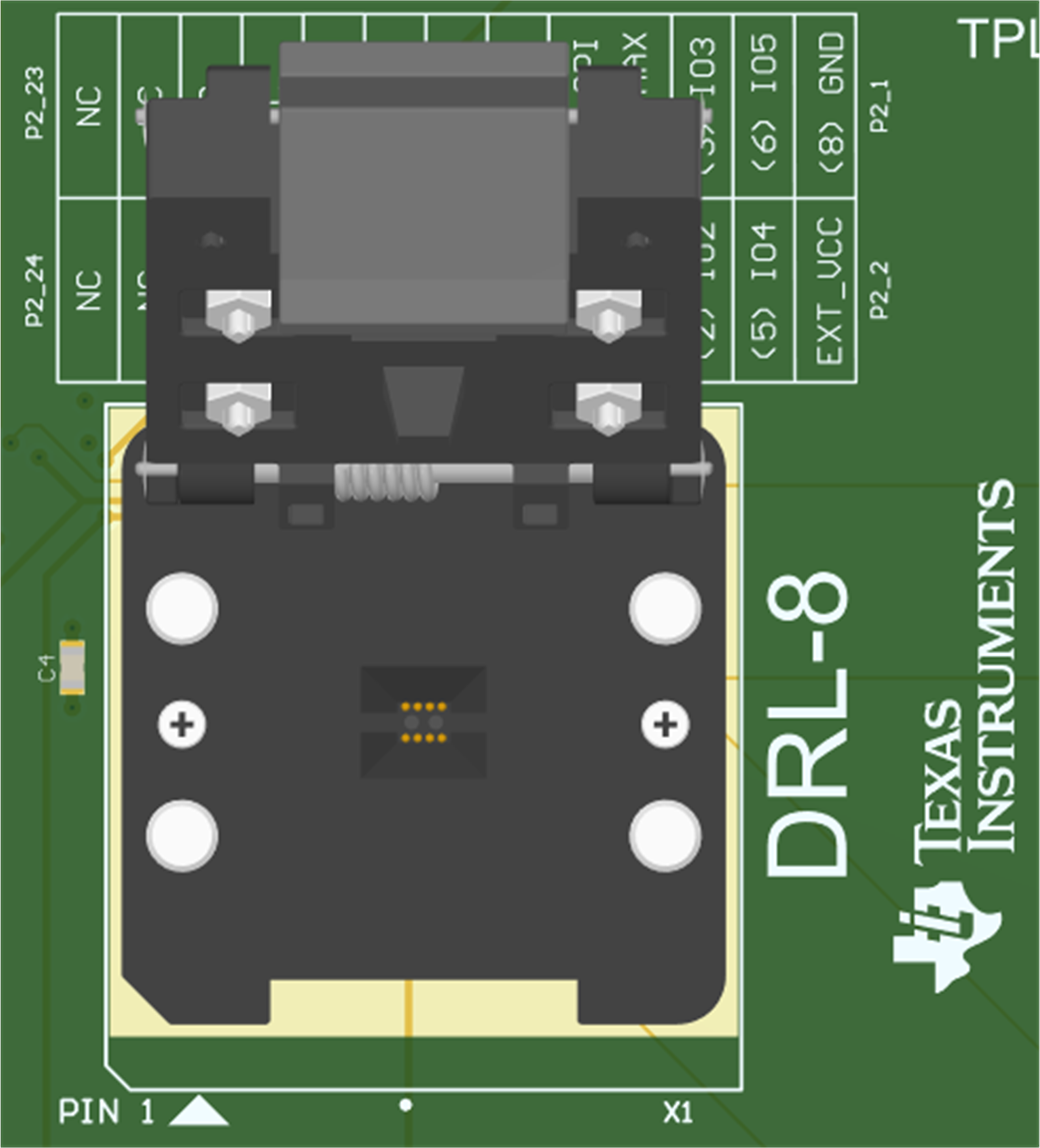SCEU031B August 2024 – October 2024 TPLD801
PRODUCTION DATA
3.2.2 Inserting a TPLD801DRL into the DRL Socket
Do not remove, replace, or add a TPLD device to or from a powered board. Do not place fingers inside the socket or touch the contacts on the bottom of the socket. TI recommends following typical ESD protection procedures while handling the TPLD801DRL.
- Open the socket by gently pulling the latch until the lid snaps open.
- Make sure that the socket is clean by blowing off socket contacts and device pads with clean compressed air.
- Use a vacuum pen or antistatic tweezers to guide the part into the socket, aligning pin 1 of the part to pin 1 of the socket as shown below.
- Close the socket lid until the latch snaps and holds the lid in place.
 Figure 3-3 DRL Socket
Figure 3-3 DRL Socket